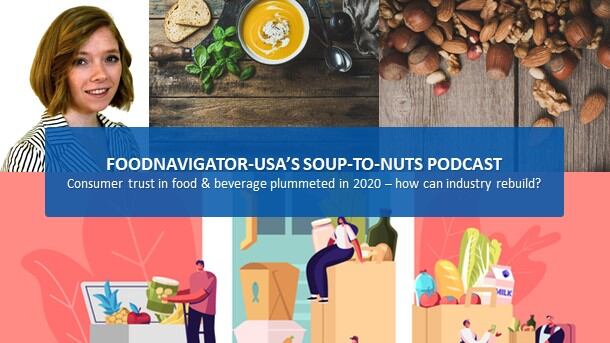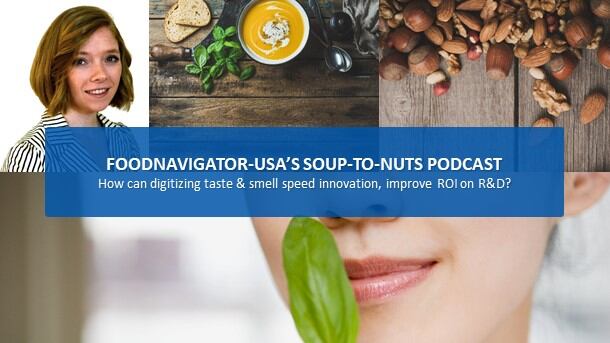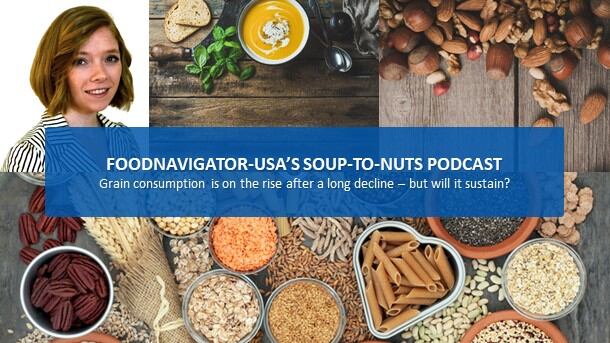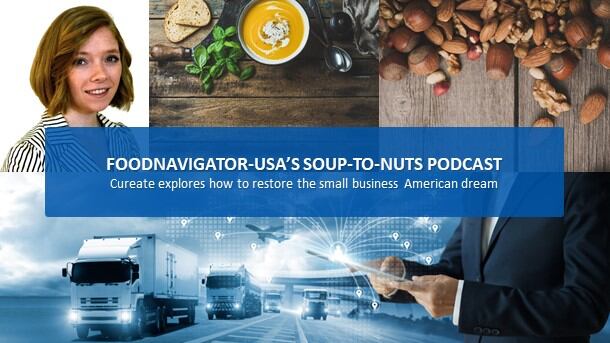The global survey of more than 33,000 respondents across 28 markets found the food & beverage industry was not alone in losing consumers’ faith last year – the negative shift occurred across all major institutions, including NGOs, government and media – all of which were assessed far more harshly than business more broadly. Indeed, the report found business was the only one of the four that still qualified as trustworthy (but just barely), as well as competent and ethical.
In the US, the drop in consumer trust in the food and beverage industry wasn’t as sharp as at the global level with a 7-point drop compared to 12 points. But, the research found nuanced trust gaps across ethnicities and among employees that speak to broader shortcomings in the food system that stakeholders must actively address in order to reclaim good standing with most Americans.
In this episode of FoodNavigator-USA’s Soup-to-Nuts podcast, Edelman’s global food and beverage lead Megan Van Someren shares what drove the dramatic swings in trust in the food industry last year, and five areas of concern that require immediate stakeholder attention, including systemic gaps in innovation, inclusion, information, incentives, and investments. She also outlines four steps industry stakeholders must take to begin rebuilding consumer trust.
[Editor's Note: Never miss another episode of FoodNavigator-USA's Soup-To-Nuts podcast -- subscribe today.]
A roller coaster year for consumer trust
For most Americans, the past year has been an emotional roller-coaster, and the ups and downs many people felt about the food industry reflects their increased curiosity about the segment, and a growing awareness of how food is produced and marketed – all of which influenced their perception of and trust in the industry as a whole.
“Around May, this was about the time that everybody was starting to go into lockdown, we saw an enormous spike in trust across food and beverage, and a lot of that was driven by grocery, driven by food makers, and what was fascinating is that … a lot of it was the hope and the heightened expectation that we had in the industry to step up and help us fill our cupboards,” Someren said.
But as time passed and more food industry employees developed COVID-19, “we also started to see the heightened kind of backlash or media coverage of factory workers not being safe,” and that underscored a sense of inequity of who had access to food and who made sacrifices for access, she explained.
Drop in trust portends future struggles
Companies that have seen sales surge during the pandemic may be tempted to dismiss the fluctuations and dramatic drop in consumer trust as just another crazy number in a crazy year, but Someren warns against such a flippant assessment.
“When we think about trust, we think about trust as a future indicator. So maybe it’s not reflective in your immediate business, but there are watchouts. This is an indicator for where there could be some rough waters to navigate in the future,” Someren explains.
For example, she explains, during the lockdown everyone needed to fill their cupboards and so purchased what was available. But as supply chains are restored and there is more flexibility in where to eat or buy food, some consumers may be more selective – opting for products that they trust versus just what is available.
Five trust gaps industry must address
With that in mind, Someren said, Edelman designed the report to not only track consumer trust but also to explore ways that industry stakeholders could improve their standing. Through this exercise, the report identified five major gaps that – if addressed – could solve many of the issues that contribute to consumers’ current distrust.
The first is a gap around innovation, which Someren descried as “massive,” and explains goes beyond new product development to include system innovation.
“Think about how much time and energy the industry is putting toward new product development, but how much time and energy is being invested in how we reimagine who’s making the products, how they are being made and how they’re being distributed.”
Toast Ale is an example of the type of innovation that Someren says industry needs to explore more. The brewery created a way to make beer from what would be wasted bread and the open-sourced the process so others could follow suit to reduce food waste.
The second gap identified by Edelman, which is closely related to the first, is around inclusion and ensuring the communities most in need of system change are represented in production and other industry roles.
“We have this massive opportunity and need to adjust the balance so that the communities that are most in need of some of these improvements are actually represented throughout. So, not just in the early stages of growing and farming, but actually in the later stages and boardrooms. We need to balance that so that all communities are being served with innovation,” Someren said.
The third gap identified by Edelman centers on information access. Consumer interest in where food comes from and how it impacts their health and that of the planet reached new highs during pandemic – shining a harsh light on lack of information and transparency to make sustainable and nutritious choices.
The pandemic also fueled consumer interest and sense of urgency around sustainability, and as they learned more about options for improving the environmental impact of food, many also became frustrated and distrustful of industry players that were not adopting that technology. Edelman identifies this challenge – and opportunity – as the incentive gap.
The last gap industry needs to address is in investing – not just in new technology but in consumer education so that they understand, are excited about and buy into new advancements.
Leverage employees to build community trust
Effectively tackling these gaps will require collaboration across industry, but it will also require companies to look internally at how they can leverage their employees as ambassadors to build trust, inspire innovation, education outsiders and even drive investment.
Unfortunately, the food and beverage industry has not historically had an “employee trust advantage,” which Someren explains means employees are not more likely to trust their own industry any more than the general population. However, she adds, that appears to be changing.
“This year, when you asked people if they trusted their own company, their own employers, there was a much higher trust advantage, and this was actually seven points higher than last year,” Someren said, noting this lift was seen across all levels of employment.
The flip side of this trust, Someren warned, was increased employee activism with staff speaking out publicly if they were unhappy.
4 steps to regain trust
While tackling this gaps and leveraging employees to win over more consumers may sound daunting, Someren encourages industry stakeholders to take the process one step at a time, beginning with what Edelman identifies as four ingredients for building resiliency for the future. The first of which is a simple self assessment, followed by empower employees, leading with facts and acting with empathy and finally offering consumers fact-based, collaborative content.
Once companies know where they stand, they should leverage their employees to help create change out reach.
Next, increase transparency and give consumers facts to help them understand what is at play and make their decisions.
Finally, provide trustworthy, collaborative content – be open to not having all the answers and look for help from other industry stakeholders so that together you can help lift up the entire category.




